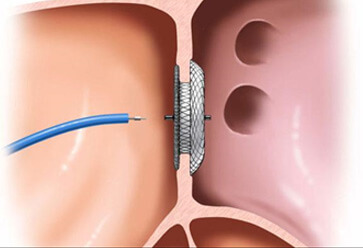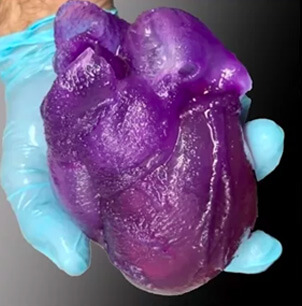How is technology helping heart surgery in newborn babies?
July 16, 2022 | Contributed by Anjali Mathur
Congenital Heart Diseases (CHDs) are among children’s most common yet underserved heart disorders. Statistically, more than 200,000 children in India are born with CHD in a year. This means approximately every 3 minutes a child is born with some form of this disease. The corresponding global aggregate is between 0.8% and 1.2% of births (National Library of Medicine).
Concerning treatment, the specific type of CHD, the intensity of the disease, the symptoms and the child’s age and weight are crucial determinants. However, rapidly developing technology promises more successful heart surgeries for newborns.
Detecting a Congenital Heart Disease

Detecting congenital heart defects in infants in time is crucial to determining surgical techniques. Echocardiography, an ultrasound of the heart, checks whether the heart’s chambers and valves are pumping blood properly. Following a few symptoms, like respiratory and feeding difficulties, and blue or pink tones to the skin, a prescribed echo may reveal the type of Congenital Heart Disease. Pink tones to the skin generally hint at a hole in the heart, while blue tones suggest more complex CHDs.
However, in a few cases, technological interventions like routine prenatal ultrasounds may detect the congenital heart defects in infants. Specialist ultrasounds, also known as ‘fetal echocardiography’, confirm the prognosis around 18-22 weeks of pregnancy. Such ultrasounds are advisable in cases with a family history of heart diseases or high-risk pregnancies.
This technology helps detect an atrial or ventricular septal defect requiring a hole in the heart treatment or ‘patent ductus arteriosus’ (PDA) marked by an opening between the heart valves. Fetal echocariography not only helps in detection of simple congenital heart defects, but also helps in detection of complex defects like Transposition of Great Arteries

Percutaneous Closure of Holes in the Heart
Percutaneous Closure is a surgical procedure to treat patients with Atrial or ventricular Septum defects (a hole between the heart’s chambers). A wire inserted through a vein in the groin goes through the hole in the heart chamber. A catheter device is inserted on both sides of the hole to close it. Hitherto, percutaneous closures in newborns have been conducted successfully, provided they are a certain weight.
3D Heart Printed Surgery
In another technological advance, researchers have developed a form of 3D printed heart surgery. A 3D- the printed heart is an artificial take on the human heart, replicating its size, flexibility, elasticity or structure of the cardiac tissue.

3D printed heart models expand the potential for accuracy manifold. Firstly, they provide a better look at the patient’s heart and its defects, helping the surgeons modify their techniques accordingly. By doing so, newborns can receive medical treatment backed by better knowledge minimizing the risk factor of invasive surgery. Also, as an educational tool, it may provide surgeons in training with a more authentic opportunity to practice.
Therefore, technology plays a crucial role in detecting, identifying and hole in the heart treatment, especially among newborns, who require gentler, more intricate care.
Advancements in technology have also helped in replacements of heart valves through Catheter Based Procedures. During early times valve replacements would require open heart surgeries. Currently Aortic and Pulmonary Valves can be replaced in Cath Lab there by preventing repeat open heart surgeries.
References:
https://www.youtube.com/watch?v=mEBjGtlB6fk
https://www.nhs.uk/conditions/congenital-heart-disease/diagnosis/

